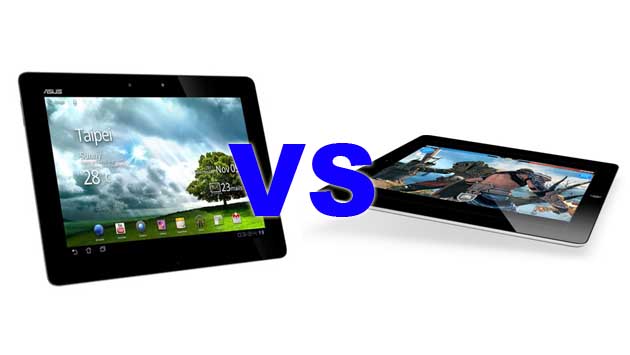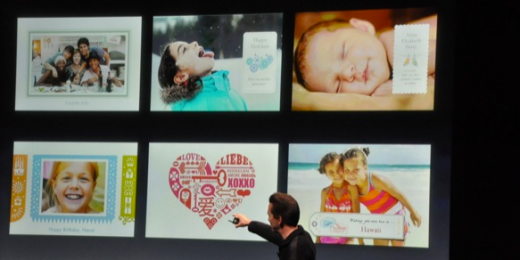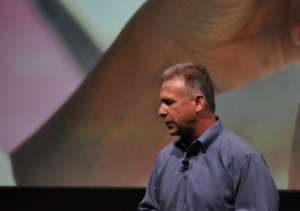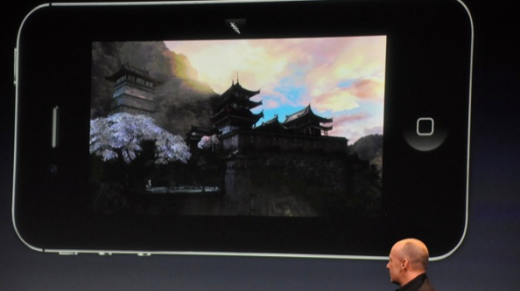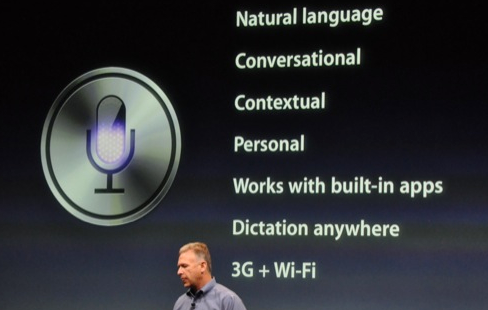The Amazon Kindle Fire has arrived complete with its 16 million colour screen and all the backing of the enormous online retail platform that is Amazon itself. Big, but is bigger necessarily better?
There also happens to be a certain other massive player in the tablet market in the shape of the company who redefined it back in April 2010 with the arrival of the first iPad. So, now with the iPad 2 ruling the roost, how is Amazon going to compare with Apple in this space and, more importantly as far as your decision goes, how do their tablets match up? Here is the Amazon Kindle Fire vs iPad 2 to help you figure that one out.
Form Factor
- Tie: iPad 2
- 241.2 x 185.7 x 8.8mm, 613g
- Tie: Kindle Fire
- 190 x 120 x 11.4mm, 413g
It’s not really fair comparing a 7-inch tab to a 9.7-inch one on form factor stats alone - the larger one is quite obviously going to be bigger and heavier. All the same, we’re going to call it a tie this time around.
Yes, the Amazon Kindle Fire is made small enough and light enough to hold in one hand - and anyone who’s tried to do the same in bed with an iPad 2 will know that that’s not so easy - but what gets us a little concerned is that, despite its more pocketable (well, baggable) size, it’s, well, a little bit fat. The similarly sized Blackberry PlayBook comes across a touch chunky and that’s 9.7mm thick. So, the Kindle Fire, at 11.4mm, might not be as physically beautiful as the competition.
Engine Room
- Tie: Kindle Fire
- OMAP 4430
- Tie: iPad 2
- Apple A4
In some ways, it’s not hugely relevant to compare the power specs of these two tablets. Both are essentially designed as closed system devices and, as such, you can bet that they’re designed to run their respective content with much aplomb. All the same, we may as well split open these systems-on-a-chip that run the two to find out what’s inside.
On the RAM front, both the Apple A5 and OMAP 4430 contain the same 512MB complement. The CPUs are also identical. Each is a dual-core ARM Cortex-9 set to run at a clock speed of anywhere between 1-1.2GHz. In fact, the only thing that separates them is the GPU. The iPad 2 has a PowerVR SGX543 and the Kindle Fire has a PowerVR SGX540. For the sake of a 67 MPolygons per second vs 60 MPolygons, we’re calling this one a tie to all intents and purposes. Those willing to nit pick may do so at the bottom.

Display
- 1st: Kindle Fire
- 7-inch, 1024x600, 169ppi, IPS
- 2nd: iPad 2
- 9.7-inch, 1024x768px, 132ppi, IPS
There are some tiny differences between the Amazon Kindle Fire screen and that of the iPad 2 but they more or less balance each other out. Both are multitouch, both are based on LCD technology and both have IPS which gives them as wide a viewing angle as possible, just in case you’re feeling generous enough to want to share your screen.
What you do get with the iPad 2 display is more of it but the advantage that the Amazon Kindle Fire has is that it maintains a similar resolution at slightly smaller size. So, you get a bit of a boost of pixel density for a snappier picture but at the expense of a little less screen real estate. The other advantage the Kindle Fire has is that the aspect ratio of the device is far closer to the film-friendly 16:9 rather than the more awkward 4:3 on the iPad 2. What might just tip the balance though is that the Kindle Fire screen has been chemically hardened to make it more durable. For whether or not this makes a physical difference, we'll have to wait and see.
At the end of the day though, this isn’t a category that should encourage you to choose one over the other.
Storage
- 1st: iPad 2
- 16/32/64GB + iCloud
- 2nd: Kindle Fire
- 8GB + USB + Amazon Cloud
Another close run category here. Neither of these devices has SD removable storage and if it were down to internal flash alone, then the iPad 2 would win with its choice of three storage sizes, all of which are bigger than the 8GB on offer in the Amazon Kindle Fire even if it does have a USB port to back it up.
The tricky part comes in because both devices also offer cloud storage. On the one hand you get iCloud with the iPad, and there’s a couple of issues here. The first is that, at the time of writing, iOS 5 and iCloud are not available on the iPad 2. However, we are expecting that to change very shortly. The next problem with iCloud is that, so far, although there’s been mention of TV shows and it doesn’t look like you’ll be able to sync them or films from the off while out and about.
So, the picture you get with the iPad 2 is that, over Wi-Fi, while at home, you're more or less covered but when out of range of your home library to sync with your options start to narrow a little. Once we're talking 3G coverage only, then there's a maximum file download size that kicks in which means no videos from iTunes at all and no big apps either.
The Amazon Kindle Fire, on the other hand, comes supported by the Amazon Cloud Storage system which promises to store as much of your Amazon bought content as you like, be it books, films, TV shows or whatever else digital that the retail giant sells. In fact, this is pretty much key to the entire model for them.
With that behind you, you can stream direct or download at the touch of a button, whatever you like. Now, that’s all very well at home, work or even at a hotel but the problem is that, because the Kindle Fire doesn’t support 3G, when you’re on the move, you’re at the mercy of whatever is sitting on that 8GB of internal memory alone. According to Amazon, that’s around 10 films.
We’re not saying that that isn’t enough but what it does mean is that using a Kindle Fire does require a modicum of thought and preparation that the Apple iPad 2 doesn’t, even if it's only with music and smaller files that you see the benefit.

Battery
- 1st: iPad 2
- Up to 10 hours video
- 2nd: Kindle Fire
- Up to 7.5 hours video
OK. Nice and simple this time. You’ll get more battery life out of the iPad 2 than the Amazon Kindle Fire. Naturally, the quoted specs are your classic “up to” figures which means that you’ll need to turn off the Wi-Fi and Bluetooth, possibly dim the screen and generally not touch the thing at all once you start watching your movies, but they should be just about be achievable nonetheless. Either way, it’s the iPad 2 that will last longer.
Connectivity
- 1st: iPad 2
- Wi-Fi, BT, 3G, HDMI
- 2nd: Kindle Fire
- Wi-Fi and USB
This isn’t normally the strongest of categories for the iPad 2 but it still manages to get one over the Kindle Fire on connectivity. The fact that Amazon hasn’t included that same free 3G that comes on the rest of the Kindle range is a bit of a bummer. It might be something that Amazon sorts out later but given that we’re talking about transferring feature length video files rather than books, it might never happen.
All the same, paid or otherwise, not having a mobile internet connection of any kind is a bit of a loss. On the plus side, there is a USB slot that you don’t get on the iPad 2 but it’s not quite as useful as perhaps it was in the past. Its best function might be as a removable storage device.
The other downer is that there’s no video-out socket in the way that the HDMI adapter provides for the iPad. So, this isn’t something for taking round to your mate’s and plugging into the back of their TV. When it comes to your TV, however, an Amazon app on your set linked to your Amazon account might remove the need for video-out. On top of that, who knows what Amazon may or may not let you do over wireless by the time this hits the shelves although it seems unlikely that users will get access to the DLNA certified apps like Skifta and Twonky.
However you look at it, there’s quite a few ifs there and, ultimately, the iPad 2 is more flexible a device on this front for the moment.

OS Software
- 1st: iPad 2
- iOS
- 2nd: Kindle Fire
- Android Gingerbread-based
We’re all pretty familiar with iOS these days, whether its iOS 4 or iOS 5. What you get is a relatively closed system with a bunch of things that you can do but also a whole host of things that just aren’t possible the way that are on Android. The plus points, of course, are that it works very well and it’s very easy to use, even if it doesn’t offer a high level of flexibility.
The Kindle Fire might run Android 2.3 Gingerbread but it’s a highly customised and closed down version. The big killer is on the apps front, but more on that in a moment. From what we’ve seen so far, the experience, although very attractive, looks like it offers even less room for manoeuver than iOS with the main face of the Kindle Fire OS a series of carousels where you can purchase and sift through your Amazon books, music and videos.
The other interesting part of the platform is the Amazon Silk browser for the old surfing of the web over Wi-Fi. Silk is a tabbed browser set to be lightening quick because half the computational work is done off-device and up in the cloud in the Amazon servers. It’s a feature known as split browsing. While it all sounds very good, the downside is that Amazon then knows all of your browsing habits. Now, naturally, this is something that your ISP probably knows anyway but a shop (Amazon) knowing all about your other shopping habits is some seriously valuable information for them. It’s up to you how you feel about that. Fortunately, you can turn the split browsing off.
There's also Amazon's Whispersync technology to enjoy whereby your videos and books will pick up where you left them on other devices.
Apps
- 1st: iPad 2
- iTunes App Store (500,000+ apps)
- 2nd: Kindle Fire
- Amazon App Store (3,800+ apps)
If there’s one place where Amazon has got you buy the balls it’s on the app front. The Amazon App Store is all you’ll get access to on the Kindle Fire rather than the vast expanses of the Android Market. The Amazon version launched in March 2011 with 3,800 applications to choose from and you can bet that it won’t include any services that interfere in any way with the company’s selling of content and positioning of its tablet device. There’s still plenty of big name games but don’t expect many tools to wrestle control of the tablet back over to you.
On the other hand, the iPad 2 gives you access to the 0.5 million and more apps sitting on the best app store in the world. No contest.

Content Library
- 1st: Kindle Fire
- Amazon
- 2nd: iPad 2
- iTunes Store
This is where the Amazon Kindle Fire really comes into its own both for the user and for Amazon. The 7-inch tablet gives you access to the entire Amazon Instant Video collection of TV shows and films which amounts to a catalogue of over 100,000 possibilities. Each one can be bought and downloaded to the device or rented and streamed. What’s more, anyone signed up to the £50/year Amazon Prime service can get over 10,000 of these rented for free. The comparison on iTunes is around 6,000 videos with nothing decent for free
Music is where you might expect Apple to do better and, indeed, there’s around 14 millions songs on offer worldwide, but, again, Amazon offers more with 17 million on the MP3 Store which you can stream for your cloud space or download to the device. Beyond that, there’s books, comics, newspapers, magazines and audiobooks and it’s not even worth making comparisons here. This is Amazon’s bread and butter. If it’s access to buy content that you want, then read no further.
File support
- 1st: iPad 2
- Most things
- 2nd: Kindle Fire
- Not everything
Again, this all comes down to what apps you’ll be allowed to use but while there’s just about every kind of player and converter to deal with those files that the native side of iOS cannot reach, that might not be possible with the Kindle Fire. Currently, the supported file format list by Amazon is:
Kindle (AZW), TXT, PDF, unprotected MOBI, PRC natively, Audible (Audible Enhanced (AA, AAX)), DOC, DOCX, JPEG, GIF, PNG, BMP, non-DRM AAC, MP3, MIDI, OGG, WAV, MP4, VP8.So, with no AVI, no EPUB and no FLAC support, it might be frustrating when it comes to playing your own library of films, books and music on the Kindle Fire.

Imaging
- 1st: iPad 2
- Rear camera (VGA stills, 720p video)
- 2nd: Kindle Fire
- Nothing
Um.
Price & Availability
- 1st: Kindle Fire
- $199 (£127)
- 2nd: iPad 2
- Wi-Fi: £339/£479/£599, 3G: £499/£579/£659
The Amazon Kindle Fire is cheap. Really cheap. It’s less than half the cost of even the most basic of the iPad 2 range and it’s going to offer a good, entertaining tablet experience to more or less everyone, and that’s hard to ignore.
It’s available for pre-order now but there are currently no plans to take it outside of the US. Doubtless, those plans will turn up eventually but, with a lot of licensing and agreement paperwork to get through, don’t expect anything in the UK for at least a year.

Conclusion
- 1st: iPad 2
- 2nd: Kindle Fire
It’s a little churlish to talk about winners and losers in this comparison but, if you want a blanket “who would win in a fight” type result, then it’s the iPad 2. Ultimately though, the reason we at Pocket-lint write these match-ups is to help you out with your buying decision, and to say that the iPad 2 is the tablet for everyone over the Amazon Kindle Fire would not be correct.
There are some differences worth noting. Yes, the iPad will last you a bit longer, it’s a better looking piece of kit, it has 3G, a camera and it’s more flexible in terms of what you can do with it. The real story, and where you need to think long and hard, is about what you want to do with it.
If a tablet, for you, is about watching movies and TV, and reading an enormous wealth of publications and periodicals, then it’s definitely the Kindle Fire that’s the one for you. If playing games, communicating, working and generally using a tablet as a tool is just as important, then it’s the iPad 2 and that’s where you need to be at. At least until the iPad 3 comes out.







 12:12 PM
12:12 PM
 Simranpal SIngh
Simranpal SIngh


